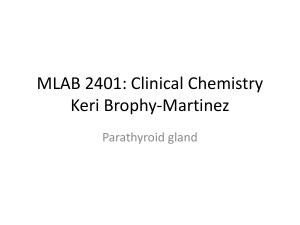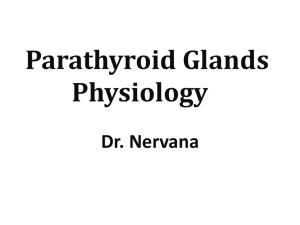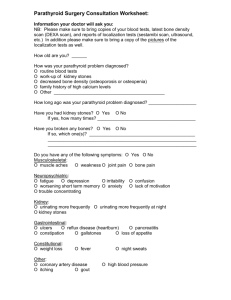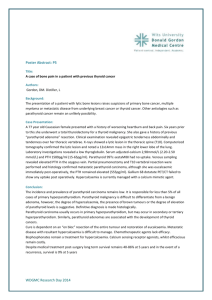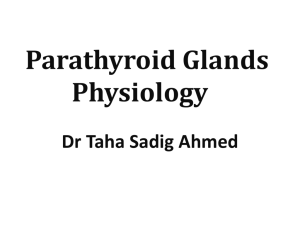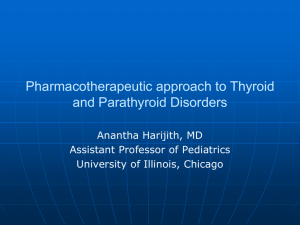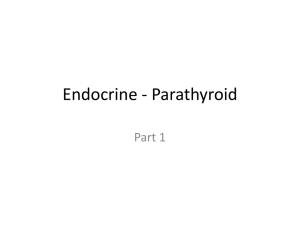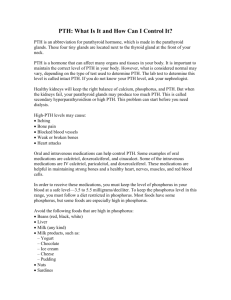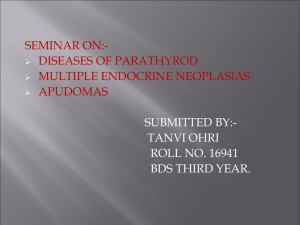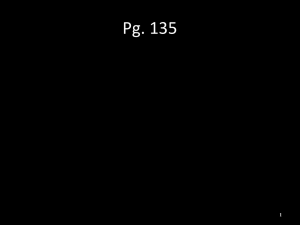Lines, SW, England,J, Bhandari, S
advertisement
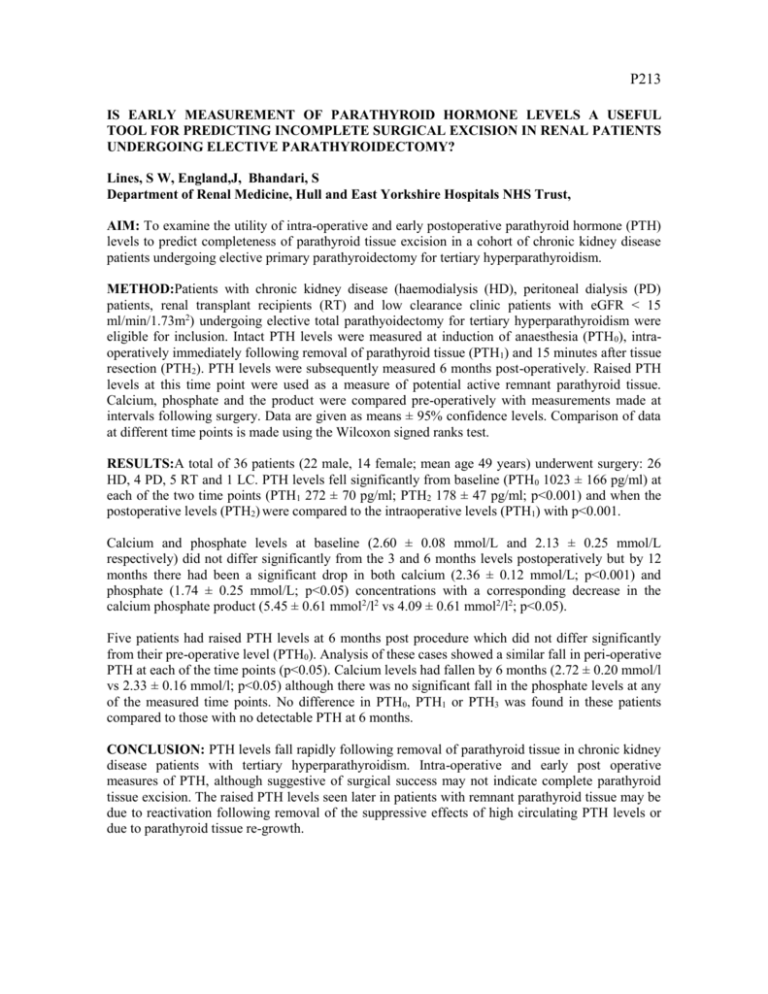
P213 IS EARLY MEASUREMENT OF PARATHYROID HORMONE LEVELS A USEFUL TOOL FOR PREDICTING INCOMPLETE SURGICAL EXCISION IN RENAL PATIENTS UNDERGOING ELECTIVE PARATHYROIDECTOMY? Lines, S W, England,J, Bhandari, S Department of Renal Medicine, Hull and East Yorkshire Hospitals NHS Trust, AIM: To examine the utility of intra-operative and early postoperative parathyroid hormone (PTH) levels to predict completeness of parathyroid tissue excision in a cohort of chronic kidney disease patients undergoing elective primary parathyroidectomy for tertiary hyperparathyroidism. METHOD:Patients with chronic kidney disease (haemodialysis (HD), peritoneal dialysis (PD) patients, renal transplant recipients (RT) and low clearance clinic patients with eGFR < 15 ml/min/1.73m2) undergoing elective total parathyoidectomy for tertiary hyperparathyroidism were eligible for inclusion. Intact PTH levels were measured at induction of anaesthesia (PTH 0), intraoperatively immediately following removal of parathyroid tissue (PTH1) and 15 minutes after tissue resection (PTH2). PTH levels were subsequently measured 6 months post-operatively. Raised PTH levels at this time point were used as a measure of potential active remnant parathyroid tissue. Calcium, phosphate and the product were compared pre-operatively with measurements made at intervals following surgery. Data are given as means ± 95% confidence levels. Comparison of data at different time points is made using the Wilcoxon signed ranks test. RESULTS:A total of 36 patients (22 male, 14 female; mean age 49 years) underwent surgery: 26 HD, 4 PD, 5 RT and 1 LC. PTH levels fell significantly from baseline (PTH0 1023 ± 166 pg/ml) at each of the two time points (PTH1 272 ± 70 pg/ml; PTH2 178 ± 47 pg/ml; p<0.001) and when the postoperative levels (PTH2) were compared to the intraoperative levels (PTH1) with p<0.001. Calcium and phosphate levels at baseline (2.60 ± 0.08 mmol/L and 2.13 ± 0.25 mmol/L respectively) did not differ significantly from the 3 and 6 months levels postoperatively but by 12 months there had been a significant drop in both calcium (2.36 ± 0.12 mmol/L; p<0.001) and phosphate (1.74 ± 0.25 mmol/L; p<0.05) concentrations with a corresponding decrease in the calcium phosphate product (5.45 ± 0.61 mmol2/l2 vs 4.09 ± 0.61 mmol2/l2; p<0.05). Five patients had raised PTH levels at 6 months post procedure which did not differ significantly from their pre-operative level (PTH0). Analysis of these cases showed a similar fall in peri-operative PTH at each of the time points (p<0.05). Calcium levels had fallen by 6 months (2.72 ± 0.20 mmol/l vs 2.33 ± 0.16 mmol/l; p<0.05) although there was no significant fall in the phosphate levels at any of the measured time points. No difference in PTH0, PTH1 or PTH3 was found in these patients compared to those with no detectable PTH at 6 months. CONCLUSION: PTH levels fall rapidly following removal of parathyroid tissue in chronic kidney disease patients with tertiary hyperparathyroidism. Intra-operative and early post operative measures of PTH, although suggestive of surgical success may not indicate complete parathyroid tissue excision. The raised PTH levels seen later in patients with remnant parathyroid tissue may be due to reactivation following removal of the suppressive effects of high circulating PTH levels or due to parathyroid tissue re-growth.
